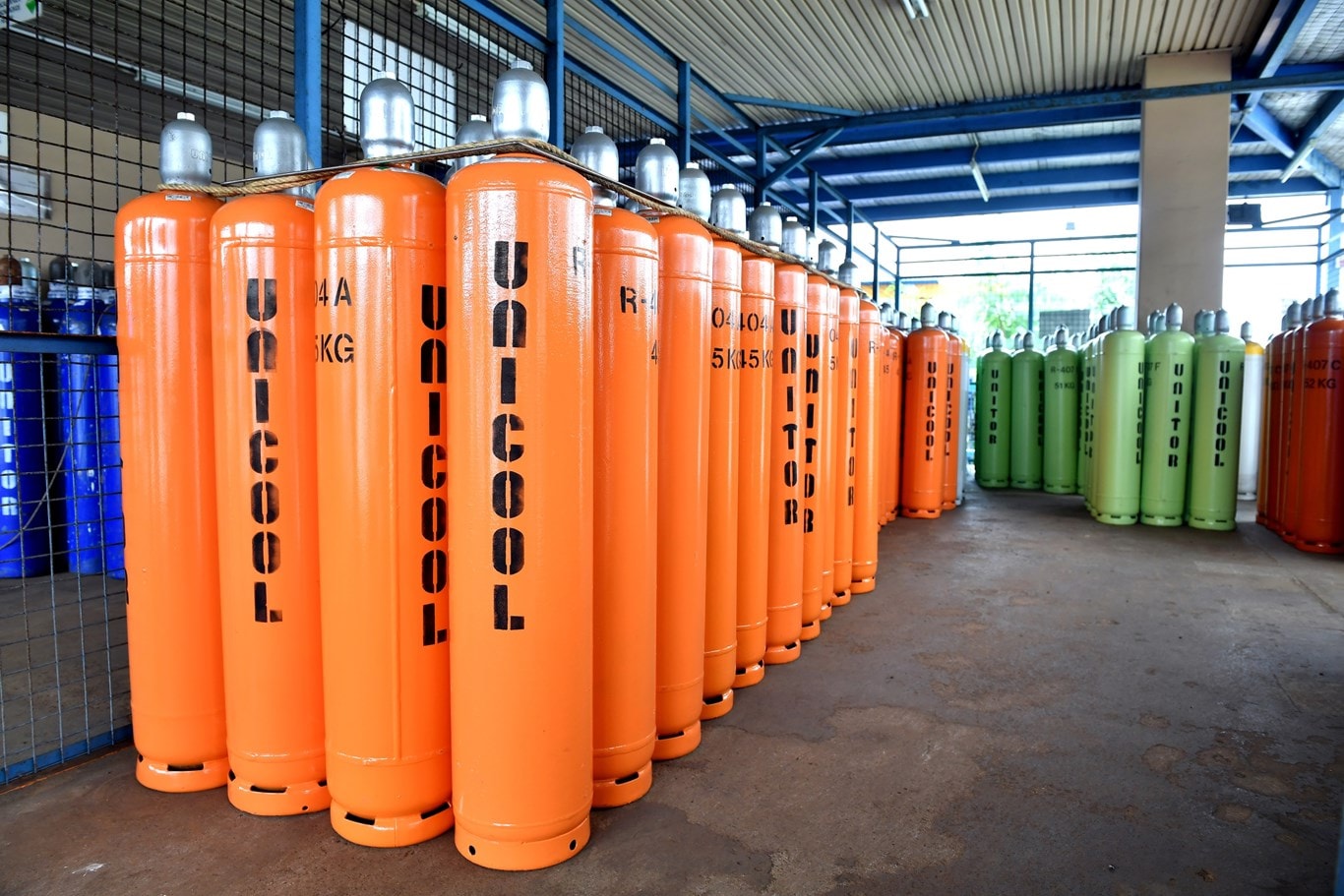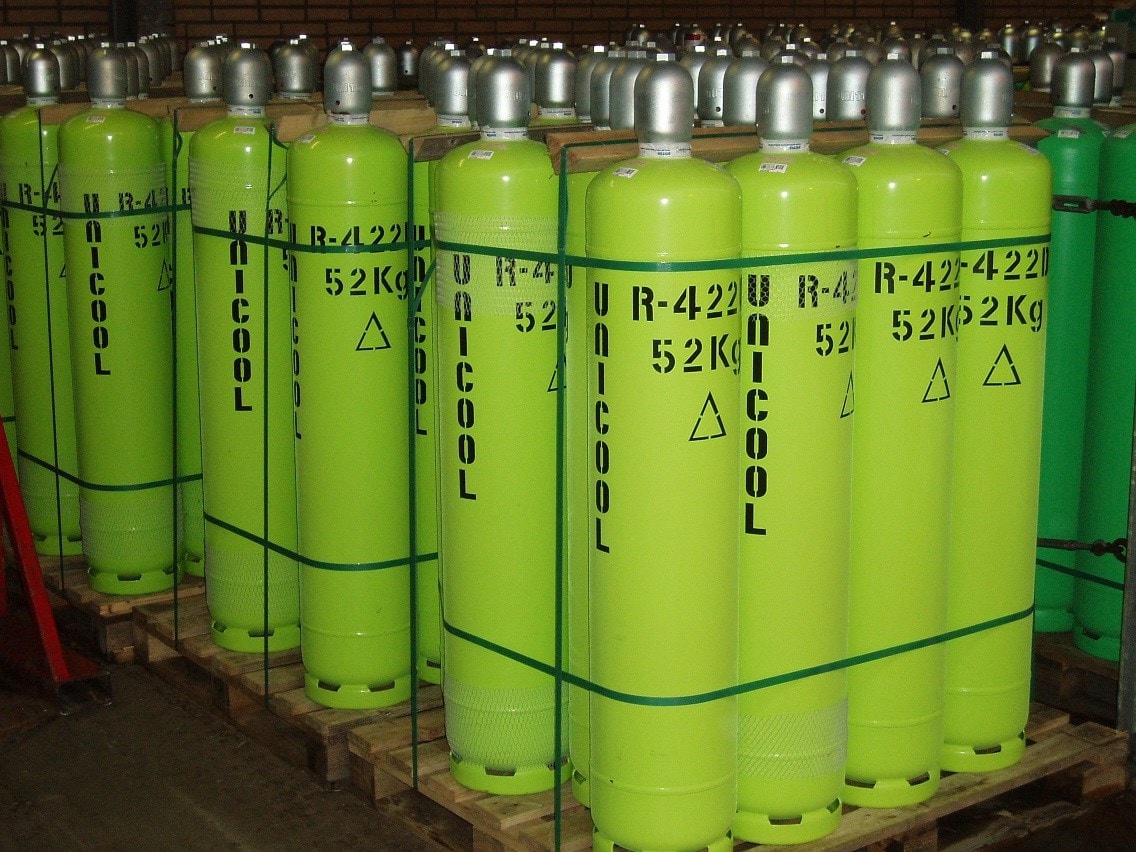The EU F-gas Regulation and what it means for the maritime industry
From 1st January
2020, the use of fluorinated greenhouse gases, with a global warming potential
of 2,500 or more, to service or maintain refrigeration equipment with a charge
size of 40 tonnes of CO2 equivalent [CO2e] or more, shall
be prohibited.

Image courtesy of Wilhelmsen Ships Services
What is an F-Gas?
Fluorinated gases (F-Gases) are a range of synthetic refrigerants that trap heat within the atmosphere and contribute to global warming. The most common of these gasses are hydrofluorocarbons (HFCs), which are typically found on board ships in air-conditioning, refrigeration and inert gas drying systems. They may also be found in the production of insulation foam and firefighting equipment.
What does all this mean for the maritime industry?
The EU F-Gas Regulation (517/2014) entered into force on 1st January 2015 and was intended to both reduce the availability and reliance of certain HFCs within the Union. It was also used as a means of controlling mass production and imposing a strict service ban on any gas with a high Global Warming Potential (GWP).
The action taken by the EU has demonstrated globally that the phase-down of HFCs is possible and in October 2016, the Kigali Amendment to the Montreal Protocol was signed by a total of 197 countries. Each signatory added HFCs to their own list of controlled substances covered by the treaty and committed to an 80 - 95% reduction of greenhouse gas emissions by 2050.
What is a high GWP F-Gas?
Global Warming Potential (GWP) is a measurement of the amount of heat an HFC traps within the atmosphere, over a given period of time and relative to 1kg of carbon dioxide. GWP is expressed in terms of a Carbon Dioxide Equivalent (CO2e).
The EU F-Gases Regulation states:
“From 1st January 2020, the use of fluorinated greenhouse gases, with a global warming potential of 2,500 or more, to service or maintain refrigeration equipment with a charge size of 40 tonnes of CO2 equivalent [CO2e] or more, shall be prohibited”.

“The global warming potential of 1kg of R-404A being released into the atmosphere is equivalent to 3922kg CO2”.
Is this applicable to your vessel?
The EU F-Gases Regulation applies to all EU flagged ships.
Non-EU flagged ships will still be able to use R-404A, R-507 and R-422D past the 1 st January 2020 deadline. However, it is envisaged that such gas will become both prohibitively expensive and difficult to source as time goes on.
The Service Ban
From 1 st January 2020 all virgin (i.e. not recovered/reclaimed gas) HFCs with a GWP >2,500 (such as R-404A, R-507 and R-422D) will no longer permitted for topping up and/or maintaining existing systems on board EU flagged ships. However, recovered/reclaimed gas can be used up until 1 st January 2030.
The EU F-Gases Regulation does not specify whether the regulation applies to an EU flagged ship operating outside the Union, but it is recommended industry best practice that all EU flagged ships should rigorously apply the regulation irrespective of their trading location.

Image courtesy of Wilhelmsen Ships Services
Other Requirements
· All systems containing F-Gases must be labelled with:
a) The type of F-Gas the system contains.
b) The total mass of the F-gas (kg) within the system and its CO2e (tonnes).
c) The GWP of the F-Gas within the system (kg).
· All systems that contain an F-Gas with a CO2e of 5 tonnes or more, must be periodically leak tested and a record inserted within the ship’s ODS logbook (small systems – annually / large systems – 6 monthly).
· End of life requirements - the recovery of refrigerant should be carried out by a qualified technician and recorded in the ships ODS logbook (presently non-mandatory but deemed industry best practice).
Record keeping
For stationary equipment, operators must keep records for each piece of equipment that is subject to a mandatory leak check (i.e. above the 5 tonnes CO2e threshold). The records that should be kept include:
· The quantity and type of F-Gas installed.
· The date and time of periodic leak testing.
· The quantities of F-Gas added during installation, maintenance or when repairing a leak.
· Whether the F-Gas used has been recycled or reclaimed (including the name and location of the recycling or reclamation facility and, where applicable, the corresponding certificate number).
· quantity of any reclaimed/recovered F-Gas.
Caution required
Due to the regulation causing shortages and increased costs of certain popular refrigerants (GWP >2,500) across the Union, many countries have reported an influx of illegal or counterfeit refrigerants.
Counterfeit refrigerants may contain banned substances that are both toxic and volatile. Therefore, in order to avoid any potential risks associated with using counterfeit refrigerants, Member’s should only procure refrigerants from a reliable/reputable source.
Further advice on suitable replacement gasses and the necessary technical adjustments needed to existing equipment should be directed to the individual manufacturer.
EU F-Gas Regulation
To control harmful emissions from fluorinated greenhouse gases (F-Gases), including hydrofluorocarbons (HFCs), the European Union has adopted the F-Gases Regulation (EU) 517/2014.
Read here